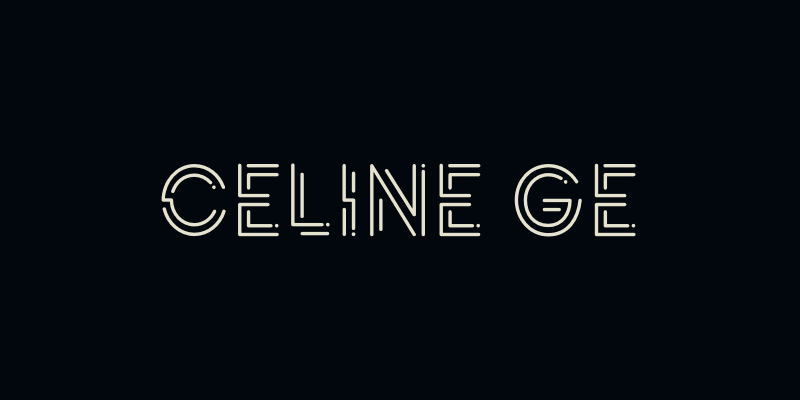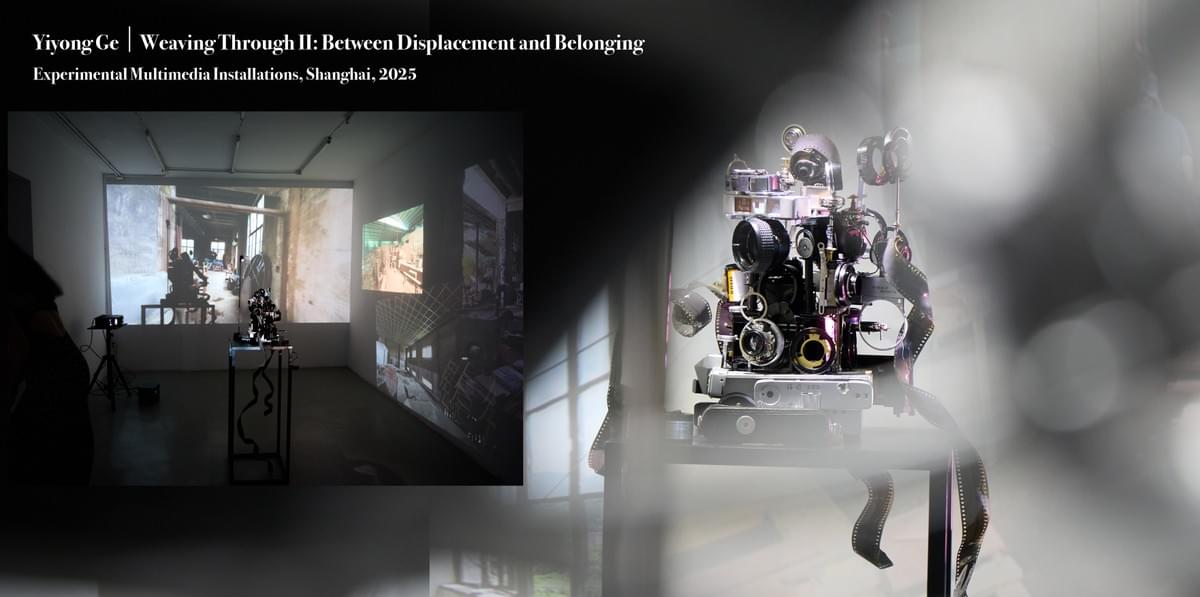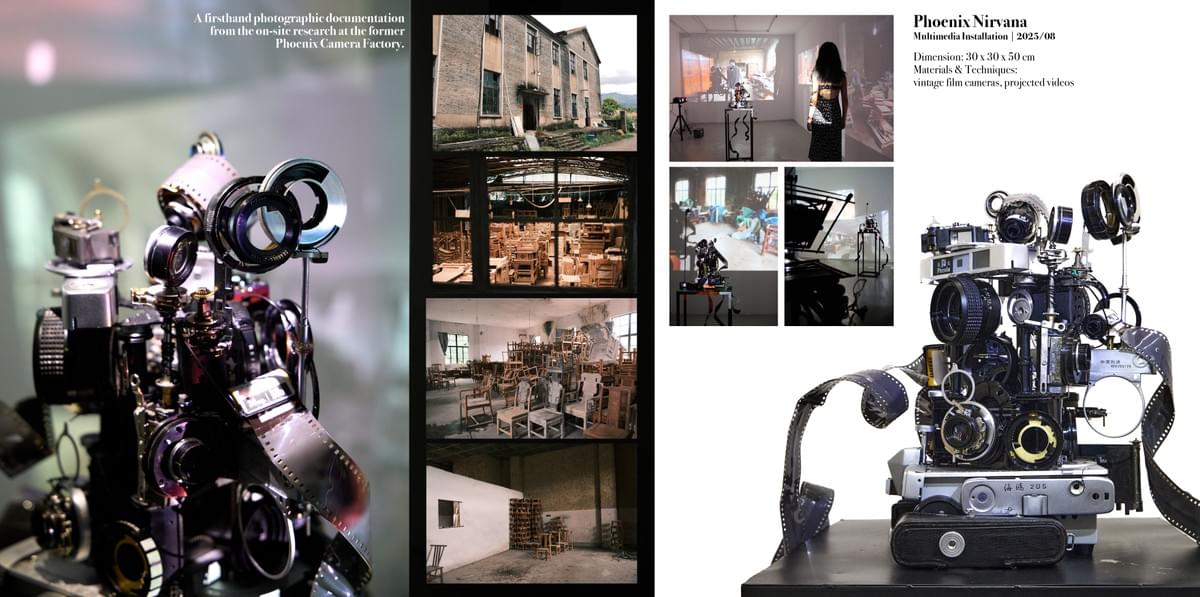

Weaving Through II: Between Displacement and Belonging
Experimental Multimedia Installations | Shanghai, 2025
Artist's Statement
Weaving Through II represents an intricate installation and video project that navigates the migratory journeys of my family. It utilizes visual elements to delve into themes of memory, cultural legacy, and the effects of globalization, while addressing feelings of displacement and belonging that emerged during a personal revelation in my 2024 homecoming.
Inspired by Jeff Wall's approach to "staged" photography, I sought to move beyond mere documentation. By constructing scenes, I aim to shape the viewers' understanding, fostering a visual conversation that connects familial memories with the realities of cross-cultural experiences.
Installations Introduction

Phoenix Nirvana
Multimedia Installation | 2025.08
Dimension: 30 x 30 x 50 cm
Materials & Techniques: Vintage film cameras, projected video
The first installation emerged from visiting the abandoned camera factory in rural Jiangxi Province where my grandparents worked for two decades. Now converted into a furniture workshop, the stacks of wood eerily echo the camera parts that once filled the space.
In our age of instant gratification, I am drawn to slow creation. Traditional film photography—with its limited exposures and patient wait for hand-developed prints—creates an emotional connection that digital processes cannot replicate. Standing among those furniture stacks, I felt the weight of loss: not just cameras, but an entire way of working and connecting. This grief became my catalyst.
I deconstructed four discarded Phoenix and Seagull cameras—the brands my grandparents helped manufacture—along with expired film, to build a “camera fountain.” Combined with audiovisual footage from the factory, the installation integrates sound, light, and motion. Film cascades like water, a visual metaphor for memory flowing across generations.
Phoenix Nirvana references both the camera brand my grandparents built and the cycle of death and rebirth—transformation through loss. The piece invites viewers to pause and reconsider our relationship with technology and time. In our hurried world, slowing down is itself a revolution—a return to warmth, presence, and deliberate creation.

Bāxiān Table
Multimedia Installation: Sculptural table, photographic lightbox | 2025.08
Dimensions:
Table: 100 × 100 × 75 cm
Lightbox: 120 × 80 × 2 cmMaterials & Techniques:
Table: SLS-printed photopolymer resin, hand-sprayed acrylic lacquerLightbox: Aluminum composite panel, LED array, diffuser panel

The Bāxiān Table is named after the Eight Immortals of Chinese mythology. It seats eight people, embodying the Chinese ideals of prosperity and family reunion. This table was my great-grandmother’s only wedding gift to my grandparents. It traveled with the family from metropolitan Shanghai to rural Jiangxi during China’s Cultural Revolution (1966–1976), then wandered for two decades before finally returning to Shanghai. Today, it serves as a spiritual anchor, preserving the family’s legacy and cultural roots.
I redefined the table digitally, transforming one half into an arch—a form inspired by my grandfather’s five-decade collection of architectural postcards featuring Notre-Dame Cathedral and the Eiffel Tower.
The design features a symbolic window: half covered with glass to preserve memory, half open to invite exploration. I envision myself as a “parasitic plant” weaving through global architectural patterns that adorn the table’s legs. This is not about abandoning my roots, but about stretching across time and space—a bridge linking memory to future, asking: where do I belong?

Sunned Quilts
Textile Sculpture | 2025.08
Dimension: 300 ×250 × 2 cm
Materials& Techniques: Cyanotypeon cotton and linen, hand-stitched

This piece is inspired by the ritual of sunning quilts—a preservation of the scent of sunshine, Grandma’s gentle reminders, and Mom’s warm embrace.
The quilt’s surface pattern is built from nearly a hundred images I collected of famous waterfalls worldwide, echoing the vintage postcards of Niagara Falls from the 1970s that my grandfather treasured. For him—living deep in the mountains of Jiangxi for years—these postcards were windows into faraway worlds he could only imagine.
Using cyanotype, a photochemical process I learned in class, I treated fabrics with light-sensitive solutions, exposed them to ultraviolet light, and then hand-stitched the pieces together. The distinctive Prussian blue hue pays homage to early imaging methods, weaving together traditional craftsmanship and family memory. It is a reminder that the greatest journey is the one that leads us back to the warmth of our origins.





